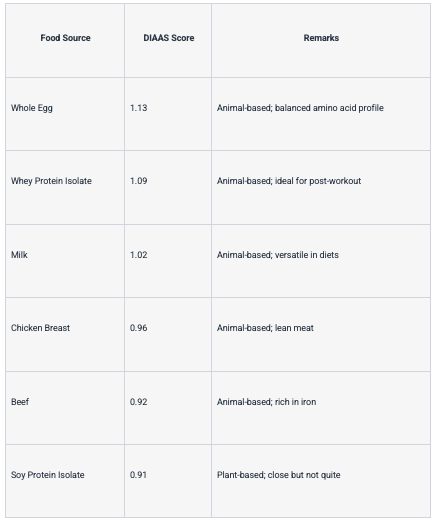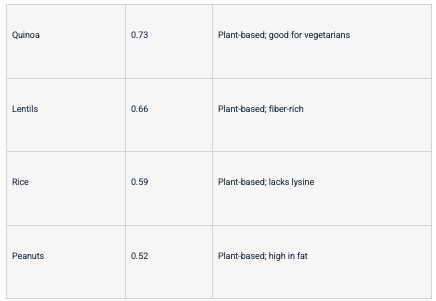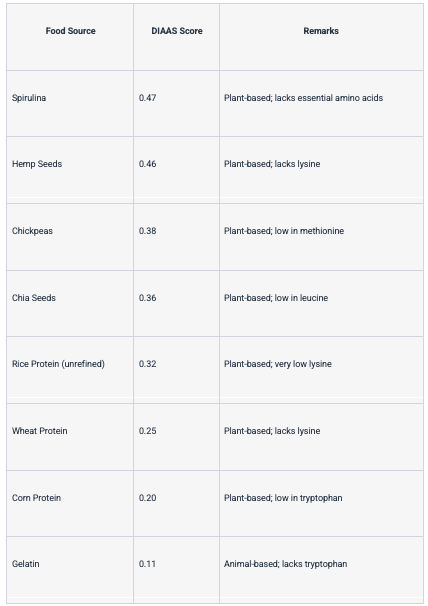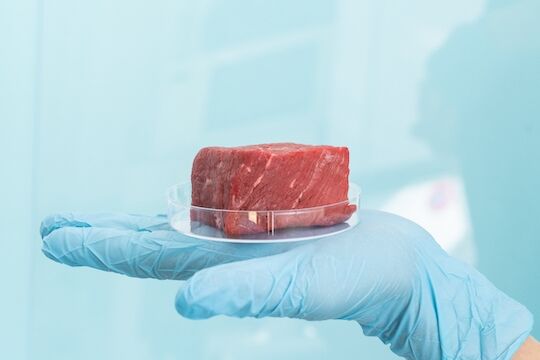Let Them Eat… Bugs?
I must disclose this immediately: I utterly loathe the World Economic Forum. To quote Obi-Wan Kenobi, “You’ll never find a more wretched hive of scum and villainy.”
From Jacinda Ardern, the Woman Who Would Be Queen (of New Zealand), to Chrystia Freeland, granddaughter of one Nazi and chief cheerleader for another, to Justin Trudeau, the chip off the old block, all who associate with the World Economic Forum have proven themselves to be authoritarian nightmares.
But the buck must stop somewhere, and that’s with Klaus Schwab, the co-founder and head of the WEF. A student of Kissinger (of course), Schwab has taken public-private partnerships to a new level. His goal has been to “infiltrate cabinets” to alter government policy. New Zealand and Canada are unrecognizable, thanks to his acolytes.
I don’t mind the climate nuts so much. Due to our current economic woes and inevitable banking crisis, idiotic policies like net zero and ESG are being rolled back.
Al Gore, John Kerry, and Mark Carney look like used car salesmen who’ve tried to stay relevant by shouting the loudest.
But when it comes to my food intake, the “Eat Ze Bugs” crowd goes beyond the pale. And they must be stopped.
I don’t usually write about health because, well, I’m a plump, beer- and wine-drinking, meat-eating machine. And while I try to take care of myself better these days, I won’t apologize for going for what Joe Rogan calls “mouth pleasure.”
While I can regulate my booze and desserts, regarding meat, I simply won’t compromise.
In Piedmont, the land of “Slow Food,” the meat is delectable. It’s so good; steak tartare is on every restaurant menu. Yup, we all eat raw meat here.
No one gets sick. In fact, everyone is much healthier here than you’d find in other parts of the world.
In this edition of the Morning Reckoning, I’ll explain why it’s a matter of life and death that we must eviscerate Schwab’s buggy plan.
Meat and Health
I’ve always associated meat with strength.
As a high school football player, I needed to eat meat to keep up. Even when my mother made linguine, it’d be with a heaping portion of rock lobster and clams.
When I moved to London and met vegetarians for the first time, they, to a person, were physically weak. Guys and girls, I never saw a strong vegetarian. I still never have.
I’m not even sure I’ve ever met a vegan. Chalk that up to good networking skills.
It was self-evident that meat was not only healthy, but also the best way to get protein into my muscles.
I may have assumed this because none of the vegetarians I knew had any muscles.
Even when claims came out about how vegetables had the same protein as meat, and that you could be healthy — no, healthier — if you cut out meat entirely, I never bought the arguments.
But protein was protein, right? My logic circuit agreed, but my gut instinct didn’t.
So, you can imagine my joy as I sat on the couch watchinga YouTube video that explained exactly why meat is so important for protein intake.
Please note that the video wasn’t a rant against the WEF. It was an informative video about how the body can or can’t ingest protein.
Protein is Not Protein
Look, protein isn’t just protein.
Not all sources are created equal.
Your body needs a variety of amino acids—both essential and non-essential—to function optimally.
The so-called “essential” amino acids are those your body can’t synthesize on its own. You have to get them from your diet.
Now, certain sources of protein, like those found in animal products, offer a more balanced and bioavailable set of amino acids compared to plant-based sources. But how do you quantitatively measure this difference?
That’s where DIAAS comes in.
DIAAS: They Kept This Quiet, Didn’t They?
Let’s dig into something you probably haven’t heard of but should absolutely know about: The Digestible Indispensable Amino Acid Score (DIAAS).
In a world where junk science often trumps logic, and Big Pharma is ready to prescribe you the next “miracle cure” for all your ailments, understanding something as basic yet critical as the quality of protein you ingest can be a revolutionary act.
Before DIAAS, the Protein Digestibility-Corrected Amino Acid Score (PDCAAS) was the darling of nutritionists. However, the PDCAAS has a glaring flaw: it truncates the scores at 1.0, meaning it fails to distinguish between high-quality protein sources that exceed the reference pattern for human needs.
The DIAAS is a more accurate measure because it doesn’t cap the score and considers the actual digestibility of amino acids in the small intestine. In layman’s terms, DIAAS tells you not just what’s entering your system, but also what your body is actually able to use.
It’s the free-market approach to assessing protein quality; it tells it like it is, with no governmental or Big Pharma interference.
Here’s a table of some of the highest-scoring DIAAS food sources. This is raw data without the cloak of governmental bias or corporate interest. It’s nutrition in numbers, plain and simple:


And here are some of the lowest:

Some Key Takeaways
- Animal Kingdom Rules: It’s hard to ignore the facts. Animal-based proteins overwhelmingly score higher on the DIAAS metric. They offer a more balanced array of essential amino acids and are more readily digestible. For anyone still clinging to the outdated food pyramid model, it’s time to wake up.
- Plant-Based Can’t Keep Up: Although plant-based proteins like soy protein isolate and quinoa offer a valuable source of nutrients, especially for vegetarians or those who prefer a plant-based diet, they generally score lower. This isn’t a judgment; it’s a quantitative observation.
- Versatility Matters: Foods like milk and eggs are not just high scorers on the DIAAS but also incredibly versatile in a culinary sense. Freedom of choice in how we prepare our food is another form of self-expression; these foods offer that in spades.
- Whole Grains Aren’t Whole Nutrition: Let’s get real. Just because something is hailed as a “whole grain” doesn’t mean it’s a comprehensive source of essential amino acids. Wheat and corn protein are glaring examples of this.
- The Plant-Based Paradox: Some plant-based sources like spirulina and hemp seeds are often touted as “superfoods,” but when it comes to delivering all essential amino acids in a digestible form, they fall short. Again, it’s not a judgment, just facts.
OK, What About Ze Bugs?
Various insects, such as crickets, mealworms, and silkworms, have been proposed as sustainable protein sources. While the idea of eating bugs may churn some stomachs, particularly in Western societies, let’s set cultural taboos aside for a moment and talk numbers.
The DIAAS scores for insect proteins like cricket flour or mealworm powder can range from 0.77 to 0.89.
To put it in context, these scores are higher than most plant-based protein sources like rice, peanuts, and even certain legumes, but still lower than top-tier animal proteins like eggs or milk.
Here’s the Rundown:
- Good but Not Great: Insects as a protein source can’t compete with the top-tier DIAAS champions like whey protein or whole eggs. But they do outperform many plant-based options.
- Eco-Friendly but Not Wallet-Friendly: While the sustainability angle is a selling point, the cost of insect-based proteins is significantly higher than traditional sources. The free market, left to its own devices, may eventually bring this down, but we’re not there yet.
- Nutrient-Dense but Context Matters: Insects contain micronutrients like B vitamins and minerals. However, your overall diet and how these insect proteins fit into it should be part of the equation.
Protein and Amino Acids
Protein quality is not just about the quantity of protein consumed, but also about the presence of all nine essential amino acids, which play important roles in muscle growth and hormone production.
Eating a variety of proteins on the same day is important because different foods have different amino acid profiles, and combining them can improve the overall protein quality of the diet.
In the video I linked above, the creator used this example.
He compared a meal of a peanut butter and jelly sandwich with lentils and edamame beans to a meal of a 4.5-ounce skirt steak and three eggs.
While each meal consisted of 54g of protein, the PB&J meal had 875 calories, compared to only 570 calories for the steak and eggs meal.
Also of note was the low leucine content of the PB&J meal.
Leucine is one of the nine essential amino acids, meaning your body can’t make it; you must get it from your diet. It’s great for muscle building and repair, insulin sensitivity, optimal brain function, and longevity.
The PB&J meal had only 3.7 grams of leucine. The steak and eggs meal had 5.3 grams. You’d have to eat much larger portions to get the same amount of leucine from the PB&J meal, which would come to 1,175 calories.
If a light went off in your head, remembering that time “fat vegetarian” was no longer an oxymoron, this is why.
Wrap Up
I hope this will help you when some purple-haired vegan literature major tries to tell you how healthy they are and how they’re helping the planet, and you’re not.
Ask them about amino acids. Ask them about protein intake. Ask them what leucine is.
They won’t have a clue. They would have been fed garbage science all their lives and will start attacking you with ad hominems and strawmen.
But no, they aren’t better than you are. And if they’re forcing their kids onto a vegetarian diet, they’re flat-out abusive.
It’s about time Klaus Schwab and his bug-eaters retire. The science says so. And our lives depend on it.
Enjoy that well-marbled ribeye with some bone marrow on the side and a glass of vino rosso.
Buon appetito!
Before I sign off, I have a special announcement for you!
We’ve just debuted our brand new Paradigm Press YouTube channel…
Every week, I’ll be sitting down for exclusive interviews with some of the brightest minds in finance.
Trust me, you don’t want to miss this.
You can view the existing videos we have on our channel now byclicking here. Also,don’t forget to subscribe so you can be notified each week when a new video goes live!
Expect our newest video this coming Tuesday afternoon.
Have a good weekend!



Comments: